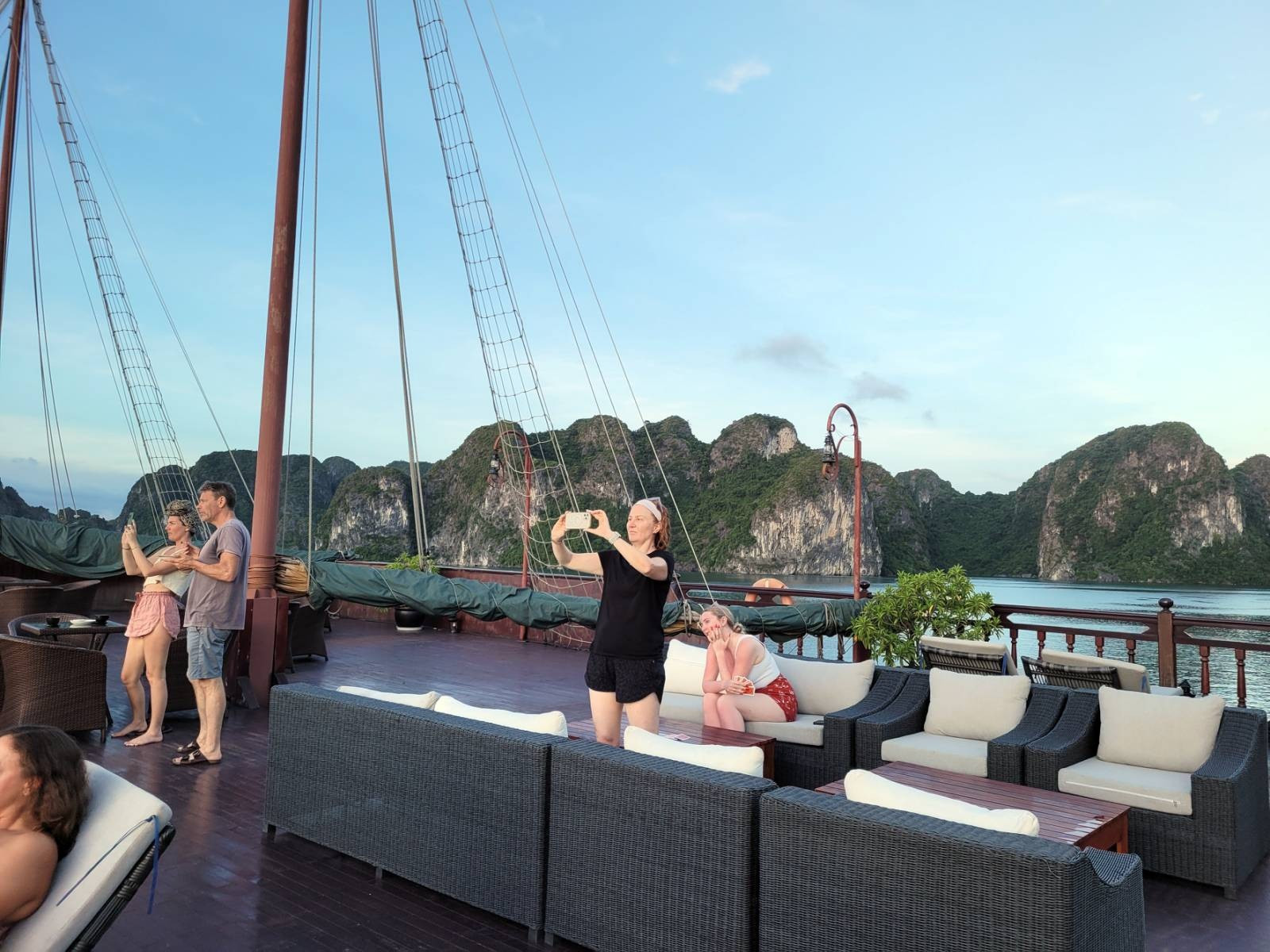
Therefore, increasing the development capacity in tourism and hospitality will improve Vietnam’s international competitiveness.
In the Covid-19 Recovery Index released by Nikkei Asia, Vietnam ranked 14th, jumping 48 places, backed by the high Covid vaccination rate and the reopening of the economy.
The successful organization of the SEA Games 31 is a testament to Vietnam’s tourism recovery effort. Within the two weeks of the SEA Games 31 in May this year, Hanoi City attracted nearly 700,000 domestic tourists, and 31,448 international guests, who had a good impression of the city.
The recent World Economic Forum (WEF) Report on the Travel & Tourism Development Index (TTDI) with the theme, “Rebuilding for a Sustainable and Resilient Future” said that Vietnam is among the countries with the greatest score improvement, rising by 4.7% and moving up eight places compared to 2019 (from 60th to 52nd).
However, we need to look into the details of the indicators used by WEF to understand our strengths and weaknesses. Vietnam achieved an above-average score in the following pillars: price competitiveness; natural resources, cultural resources; air transport infrastructure; non-leisure resources; safety and security. These strengths give a true reflection of Vietnam’s plans and policies, such as supporting SMEs, upgrading infrastructure, reducing crimes, focusing on historic preservation policies, and improving the landscape of historical relics.
There remain limitations such as a lack of travel and tourism development policies, water system, medical institutions and unsustainable development.
Enhancing competitiveness
Among WEF’s pillars, Vietnam’s score on Environmental Sustainability was alarmingly low (3.7 out of 7.0, ranking 94th out of 117). This pillar measures the sustainability of an economy’s natural environment, protection of its natural resources and metrics related to greenhouse gas emissions. WEF said that a clean environment is crucial to ensure a country’s competitive advantage. The overexploitation of natural resources may harm the environment and affect sustainability in tourism development.
Currently, Vietnam is making efforts to increase the score with policies regarding conserving and promoting natural heritage. In Halong City, the local authorities are trying to “Say No” to plastic waste. The Halong Bay Management Department had plans for garbage collection in order to gradually enhance the image of the World Heritage-listed bay to tourists.
Apart from Environmental Sustainability, the score on the Health and Hygiene pillar was also seriously low (4.4 out of 7.0, ranking 73rd). The pillar measures healthcare infrastructure, accessibility and health security. According to WEF, Covid-19 has demonstrated how important a country’s healthcare system is.
At the same time, while access to safe drinking water and sanitation is important for the comfort and health of travelers, the quality of infrastructure and services at destinations also affect tourists’ experience. A good start is to protect water resources and renovate and conserve public bathrooms. The 7R framework (Reduce, Reuse, Repair, Refurbish, Remanufacture, Recycle and Repurpose) must also be applied to reduce environmental pollution.
Another pillar that Vietnam performed poorly is Tourist Service Infrastructure (2.8 out of 7.0, ranking 86th). This pillar measures the quantity of services regarding vehicle rentals, accommodation, resorts and leisure. The restrictions on Vietnam’s tourism service quality are undeniable, especially in remote areas – whose potential has not been unlocked.
Moreover, Vietnam’s International Openness only scored 3.5 out of 7.0, ranking 69th. This pillar measures the number of bilateral air service agreements the Government has entered into, and the number of regional trade agreements in force. Financial openness is also measured as the free flow of capital is important.
The low score on International Openness affects the Prioritization of Travel and Tourism. This pillar measures the extent to which the Government and investors actively promote and invest in the development of the travel-tourism sector. WEF highlighted the Prioritization of Travel and Tourism as an important factor in developing tourism capacity. The current score of Vietnam is 3.7 out of 7.0, ranking 87th, lower than the score in the 2019 report, proving that Vietnam lacks prioritization in travel and tourism.
Playing to strengths, create breakthroughs
Based on the report by WEF, Natural and Cultural Resources is one of Vietnam’s strengths, ranking 25th on this pillar. Therefore, to build an attractive destination image, apart from relying on the hospitality of the Vietnamese, it is essential to develop and conserve different types of cultural and scenic spots. Through historic sites and unique tourism products, tourists can gain knowledge of Vietnam’s history and culture, as well as experience the spiritual life of the Vietnamese then and now.
Besides other well-known heritage, the Complex of Yen Tu Monuments and Landscapes in Quang Ninh Province will be able to win UNESCO’s recognition. Phong Nha-Ke Bang in Quang Binh Province owns a cave system, which was ranked 8th out of the 52 most attractive destinations in Asia (according to The New York Times).
Vietnam’s beauty and culture attract international tourists but it is crucial to make use of these resources and develop plans in sustainable ways. At the same time, it is necessary to create exceptional tourism products, establish a stepping stone to enhance tourism development capacity and promote the national brand.
Source: Saigon Times